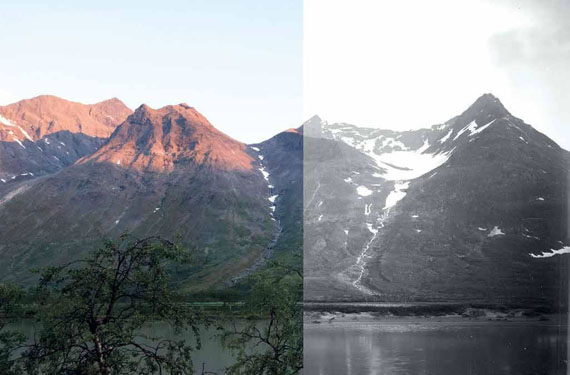
Acts of Disappearance
PARALLEL European Photo Based Platform
Morten Barker » Nuno Barroso » Emanuel Cederqvist » Ida Nissen » Joshua Phillips » Thomas Wynne »
Exhibition: 16 May – 19 May 2019
Photo London
Somerset House - The Strand
WC2R 1LA London
12-19

PARALLEL European Photo Based Platform
Rua Frei Francisco Foreiro, 5 – 4º
1150-166 Lisboa
+351-965 091 987

"Acts of Disappearance"
Morten Barker, Nuno Barroso, Emanuel Cederqvist, Ida Nissen, Joshua Phillips and Thomas Wynne
Photo London - Stand Number S1
16 – 19 May 2019
W.M Hunt in Conversation with Bruno Humberto
Friday, 17 May, 2pm
Screening Room Somerset House
Parallel, the pan European photography organisation is delighted to present the exhibition "Acts of Disappearance" at Photo London 2019.
The exhibition, winner of the "Parallel Award 2018" and curated by Bruno Humberto, brings together the work of six artists: Morten Barker, Ida Nissen, Nuno Barroso, Joshua Phillips, Emanuel Cederqvist and Thomas Wynne. Each artist is concerned with the idea of the subjective landscape: an impermanent and transitory vision that exists in the mind of the beholder only at the very moment it is seen, before being then lost forever.
The landscape has inspired artists for centuries to work directly from nature, responding to what they perceive in front of them. But for a new generation of photographers observable and objective reality in landscape is a difficult and elusive idea, always just out of reach. Instead they approach landscape as a fictional narrative surface onto which individual sensitivities are projected. Each of these photographers goes beyond simply documenting the world and considers our gaze as an act of interested observation.
Morten Barker’s project "Hiroshima, Mon Amour" takes its title from Alain Renais’ 1959 film, which documents the personal conversation of a French-Japanese couple about memory and forgetfulness as they separate after a love affair. In his 16 metre digital montage Barker encourages a visual conversation between historical landscapes held in our collective memories, combining Nasa’s collection of lunar photographs with screen shots from Renais’s film, and sets both against the mountain ranges of Hiroshima and Nagasaki after the dropping of the atomic bombs to create new hybrid landscapes.
Emanuel Cederqvist also employs archival images in his project "The Margin of Error", mixing Professor of Geology Axel Hamberg’s early mapping images of the Sarek National Park in Sweden with his own photographs taken while hiking in the same region. Presented together, the images, separated by 100 years, are evidence of a landscape physically unaltered by time; only the perspectives and position chosen by each photographer when the image was made are different.
During a summer walk Thomas Wynne heard the sound of people enjoying themselves in the bathing ponds on Hampstead Heath, it was only later that he realised that the sounds came from the Women’s Bathing Pond. The trees and bushes in Wynne’s Women’s Pond offer a landscape of obfuscation, forming a barrier around the idyll of the Hampstead Heath bathing ponds, separating us not only by gender but also by blocking the gaze of passers-by.
�

In his work "For a Long time Now I Have Fallen to Sleep with the TV" turned on Joshua Phillips recognises the natural motifs abstracted from landscapes in everyday objects. In found materials, taken from magazines, wallpaper, carpets, china plates and domestic items, he finds micro forests, oriental and Victorian gardens ready to be reassembled into newly formed landscapes. Phillips wants to bring out the differing visual functions these motifs and forms take on when removed from their original settings by photographing them, and explore how the act of looking changes them depending on the viewer’s perspective.
Nuno Barroso’s project "Impermanence" is not about landscape in any conventional photographic sense. In common with the other pieces in the exhibition Barroso is attempting to subvert the concept in order to open up possibilities about how we read images of the landscape. Barroso is particularly interested in the idea of space and the impermanence of what exists within it at any given time; he considers the space in which things exist as permanent as long as we are alive to see it. Nature changes seasonally and through the growth and dying away of plants and vegetation. The increasingly common sight of a dead palm tree [pictured] afflicted by the Asiatic scarab beetle is symbolic of this dying away as the insect decimates the palm trees across Portugal and underlines the transitory nature of the seemingly eternal Portuguese panorama. While the palm trees within the Portuguese landscape are changing shape, colour, structure, the abstract space in which they exist remains the same.
Closing the circle for this collective exhibition is "Subjunctive Mood" by Ida Nissen, an abstract non-narrative project that speaks directly to the act of disappearing. Nissen makes photograms by casting shadows through colour filtrations onto photographic paper multiple times and then soaks the prints over the course of a few days causing the emulsion to deteriorate. When the photograms are displayed in the exhibition, they continue to degrade making the surface image disappear over time. There is no fixed final image and without any reference points it is impossible to imbue these images with any specific meaning. Instead Nissen wants to propose the photograms as a flexible screen we look at and through, going past the surface as it peels away to consider where the image is located. As the erosion continues, we can also consider when an image ceases to be.
Parallel is a four year programme, co-funded by the European Union.
More information: parallelplatform.org�


